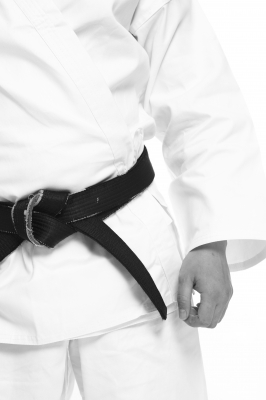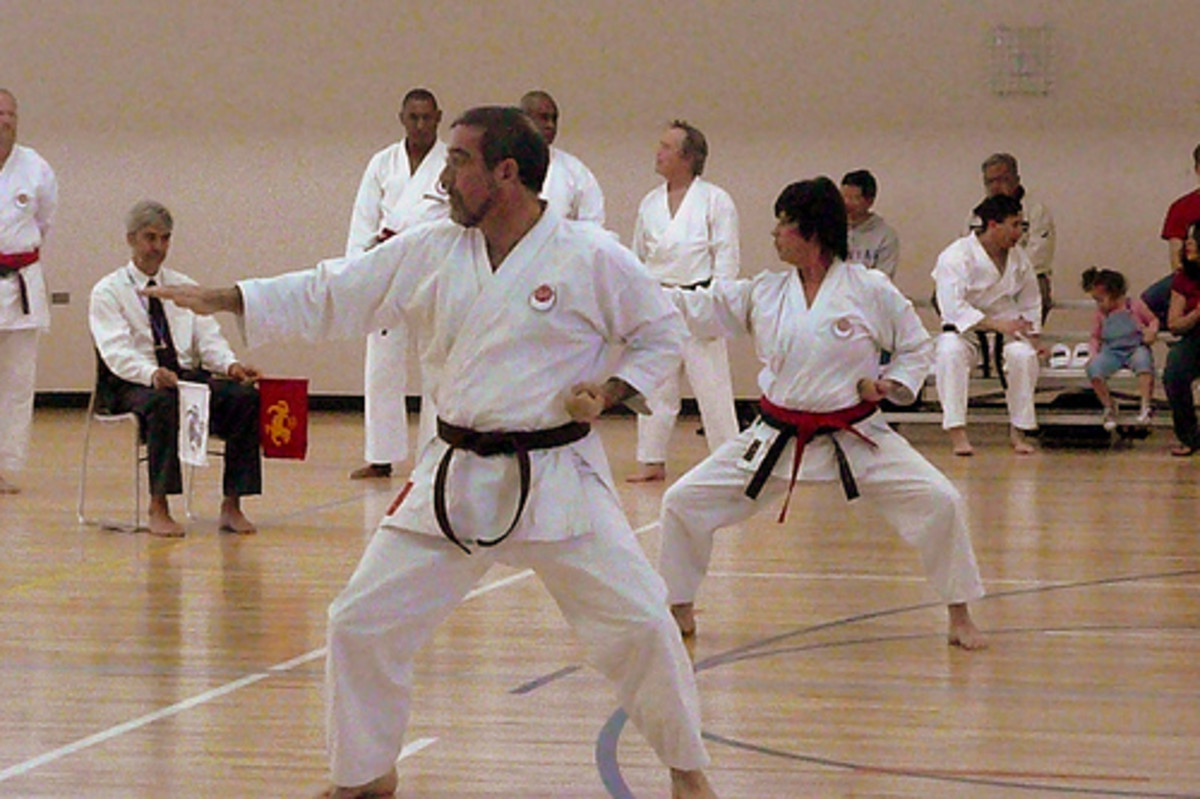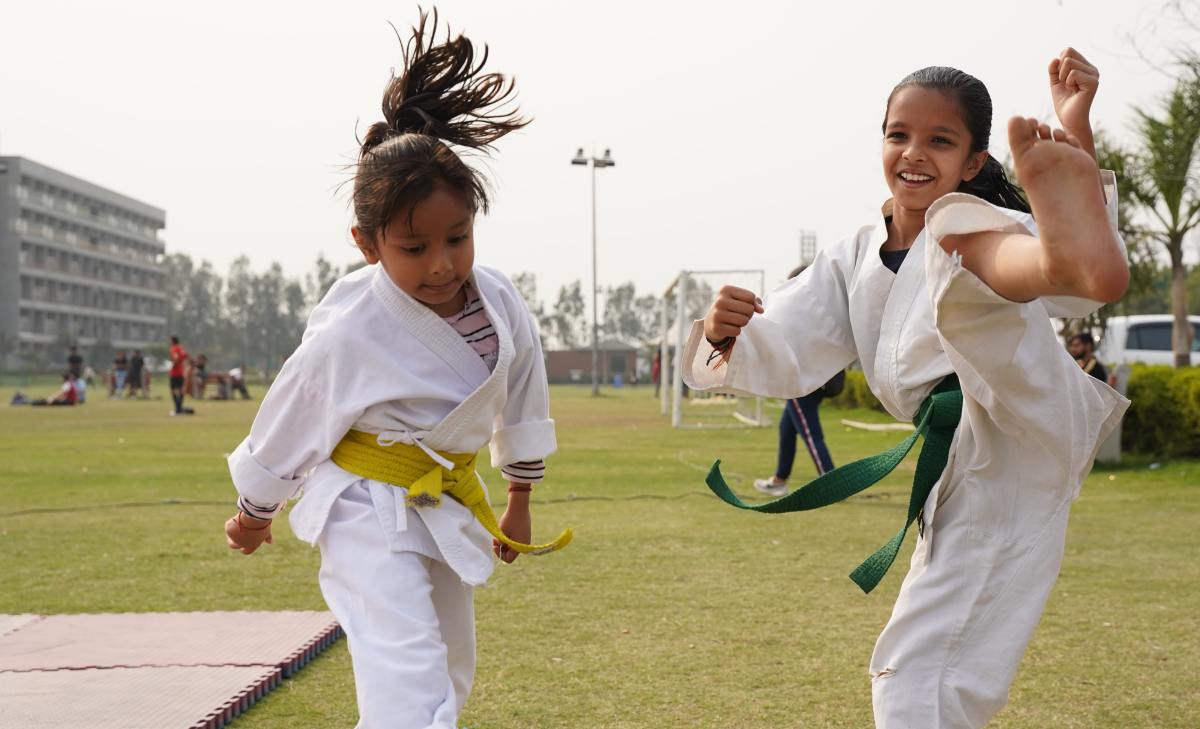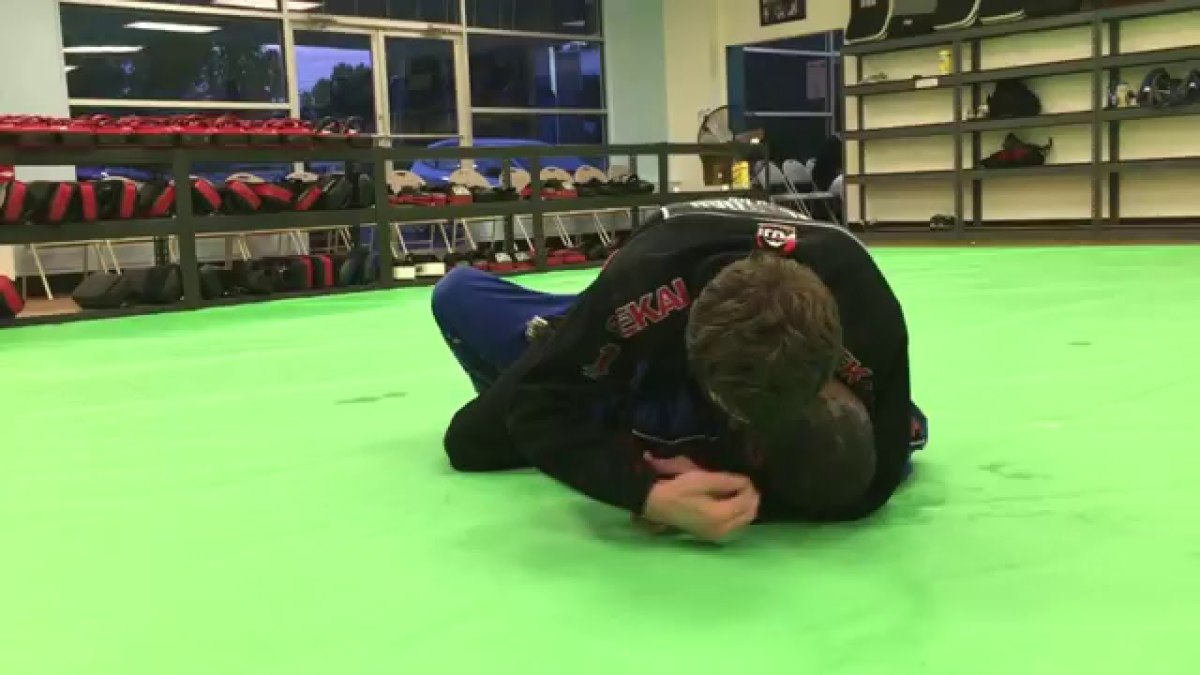- HubPages»
- Sports and Recreation»
- Individual Sports»
- Martial Arts
A Beginner's guide to Shotokan Karate

The empty-hand way
Karate is a martial art that focuses on striking with the arms, fists, hands, knees, elbows and feet. It also teaches defense techniques such as blocking and getting out of the way. The origin of Karate dates back many years to a small island off the Japanese coast, called Okinawa. The people of Okinawa were mostly farmers, and had to devise a way to protect themselves from the Samuri, the Japanese military of the time.
Gichin Funakoshi, an Okinawan nicknamed Shoto, developed his own style of Karate in the 1930s and 40s called Shotokan, meaning Shoto's way. He took his style across Japan, demonstrating and teaching it at different Universities. He died in 1957 but many of his students continued to teach the style after his death.
Where will I train, and what will I do in the classes?
Shotokan clubs train in Dojos, which can be anything from a purpose-built studio, to a school gymnasium. The only thing that defines a Dojo is that karate training and teaching takes place there. You must always bow when entering and leaving the Dojo for any reason. Clubs are often led by a Sensei, who will usually be a black belt with years of training and teaching experience. There are often assistant Senseis, who will either be lower-grade black belts, or brown belts. Sessions are usually split into three, focusing on Kihon, Kata and Kumite.
Kihon means basic, and is where you practise and perfect different striking techniques, both on their own and in combination. Examples of basic techniques that you will learn include:
- Choku zuki - Normal punch
- Gyaku zuki - Reverse punch
- Oi zuki - Lunge punch
- Age uke - Rising block
- Soto uke - Outside forearm block
- Gedan barai - Downwards sweeping block
- Mae geri - Front snap kick
- Mawashi geri - Roundhouse kick
- Yoko geri keage - Side snap kick
- Yoko geri Kekomi - Side thrust kick
- Ushiro geri - Back kick
This list just covers the most basic techniques that you are likely to learn and develop in your first year of training. There are many more advanced techniques that will be taught to you in time.
Kata are set patterns of techniques that have been passed down for generations in order to preserve techniques. They are beautiful to watch, and differ in appearance from slow and graceful, like Nijushiho, to fast and strong, like Bassai Dai. If you want to see what different katas look like, you can have a look on Youtube. Search for 'Shotokan Kata'. For beginners, there is a kata to learn for each belt, starting with 'Kihon', which is a basic kata focusing on lunge punches (oi zuki) and downwards sweeping blocks (gedan barai).
Kumite covers all of the fighting aspects of Karate. Beginner grades are given set fighting patterns to be completed with a partner, that increase in difficulty as you move towards black belt. Three step is the first kumite pattern that you are taught, where you take turns being the attacker and defender in a series of three oi zukis to the head (jodan), and then the chest (chudan). Each set is finished by the defender counter-striking the attacker. These patterns are very important as they help you develop automatic reactions to block different strikes, that will work in your favor when you start taking part in freestyle fighting. When sparring with a partner using set patterns, or freestyle, you should not hurt each other. Techniques are controlled and should stop just short of contact, but be executed with speed and power, and be on target as if you were really striking. Karate is a brush-contact sport. Freestyle does what it says on the tin. Two opponents of any grade spar with each other, trying to land a technique on their partner. There is no set pattern, and any techniques can be used. A higher grade sparring with a lower grade should take into account the skill level of the person they are fighting, and not attempt any techniques that they would not have learned the defense for, and should not be too quick in their strikes, in case they are not blocked in time.
Shotokan grade system
Shotokan karate has a grading system where students move up a series of colored belts after undertaking gradings. The belt system is divided into Kyu grades (beginner grades) and Dan grades (advanced grades). The system is as follows:
- 10th Kyu - White belt (everyone starts here)
- 9th Kyu - Orange belt
- 8th Kyu - Red belt
- 7th Kyu - Yellow belt
- 6th Kyu - Green belt
- 5th Kyu - Purple belt
- 4th Kyu - Purple and white belt
- 3rd Kyu - Brown belt
- 2nd Kyu - Brown and white belt
- 1st Kyu - Brown and double white belt
- 1st - 10th Dan - Black belt
You should expect to train twice a week for at least 2 1/2 years before achieving the rank of 1st Dan. 1st Dan is just the beginning - Dan grades go up to 10th Dan, but very few people have ever achieved this rank. You have to be an absolute master, and it takes many decades to achieve.
Benefits of Karate training
If you undertake regular lessons in Shotokan Karate, you will develop self-discipline, heightened respect, fitness, flexibility and self-defense skills. It also increases confidence. People from 6 years and up can train, but some associations make children wait until they are 8 to undertake Kyu gradings. These associations may have different achievement systems for 6 - 8 year old children so that they can maintain interest and see how well they are progressing. Costs for training vary depending on the club, but are generally very reasonable. You will, however, have to get an annual license from whichever association the club is affiliated with, to make sure that you are properly insured. These aren't usually expensive and your club will be able to give you more details.
Where can I find a club?
To find local Shotokan clubs, search the internet or look in your phone directory. Contact the club before you go to let them know that you are interested, and they will tell when and where they train, and how much sessions cost. Some clubs offer a free taster session so that you can see if you like it before you join. If you decide to join, you will need to buy a Gi (uniform) after a few weeks, which is a white cotton pant and jacket combination fastened by a cotton belt. Your club may have one that you can buy from them, or will be able to advise you of the best place to purchase one. You can also look on the internet.
Above all, learning Shotokan Karate is safe and fun, and you will meet many new friends and be able to share your journey with them.






